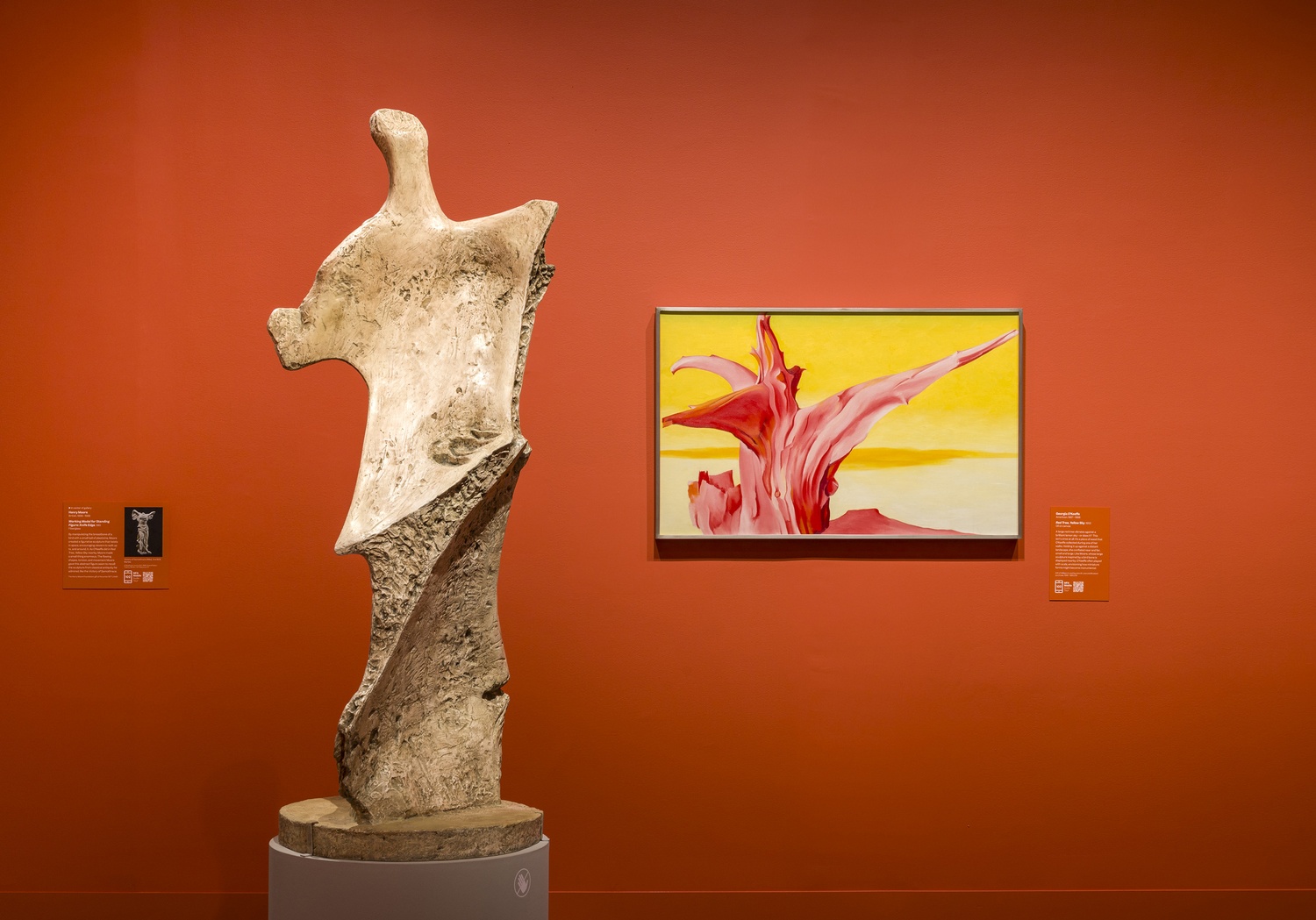
News
Summers Will Not Finish Semester of Teaching as Harvard Investigates Epstein Ties

News
Harvard College Students Report Favoring Divestment from Israel in HUA Survey

News
‘He Should Resign’: Harvard Undergrads Take Hard Line Against Summers Over Epstein Scandal

News
Harvard To Launch New Investigation Into Epstein’s Ties to Summers, Other University Affiliates

News
Harvard Students To Vote on Divestment From Israel in Inaugural HUA Election Survey
‘Georgia O’Keeffe and Henry Moore’ Review: The Museum of Fine Arts Finally Unites Two Masters of Modernism

An aperture in one of Henry Moore’s sculptures aligns perfectly with the pale blue sky of a Georgia O’Keeffe painting three rooms over in “Georgia O’Keeffe and Henry Moore” at the Museum of Fine Arts, Boston. One of Moore’s maquettes, an imitation of a found seashell, sits next to an O’Keeffe painting of a shell. The sharp, jagged edges of Moore’s “Knife Edge” loom over O’Keeffe’s “Red Tree, Yellow Sky,” complete with its own serrated lines and corners. When these similarities are placed in such close proximity, it comes as a surprise that Georgia O’Keeffe and Henry Moore never met. Developing their closely interwoven style independently, the former worked in the steep mountains and canyons of New Mexico and the latter in the sloping hills of Perry Green, Yorkshire.
The exhibition therefore explains what links these two artists and the shared influences and legacies that they embody. The first step of such a justification obviously lies in the works of the artists themselves, the result of a collaboration between the Georgia O’Keeffe Museum and the Henry Moore Foundation. The MFA contextualizes the artists’ “organic abstraction” with comparisons to photographs by Brett and Edward Weston as well as paintings by Ceri Richards, contemporaries who acted as artistic intermediaries between the English Moore and the American O’Keeffe. Yet the exhibition uses far more than just the artistic works to demonstrate its point — the design of the exhibition itself also shows the inherent similarities and differences between the artists.
Entering the exhibition, the bright terracotta-colored walls of the first room immediately grab the attention of visitors. Acting much like the colors and shapes of O’Keeffe and Moore’s work, the walls hint at the natural influences underpinning the work of both artists. The pale colors of the other rooms, sterile in comparison, make this first room an even stronger statement. Yet in the paint splatters on the floor of the room that contains Moore’s reconstructed studio and the warm glow of the adobe-colored walls in O’Keeffe’s studio, the exhibition truly immerses the visitor in the art. Removing the museum walls from the equation, the galleries form an uninterrupted bridge between the artistic visions of the past and the experience in the present.
The pièce de résistance of the exhibition lies in this recreation of O’Keeffe and Moore’s workspaces, where the profound inspirational similarities between the two artists truly come alive even as their significant artistic differences are exposed. Natural objects abound in both artists’s workspaces, from O’Keeffe’s skulls and pelvises to Moore’s eclectic collection of found objects. But while O’Keeffe’s studio is concise, Moore’s studio is cluttered.
Such traits find themselves in the works of the two artists as well. O’Keeffe’s fastidious elegance translates beautifully into her set of flower paintings, hanging just a few rooms away, where her command of color takes a commonplace subject and elevates it into a work that demands attention. On the other hand, Moore’s maximalist brilliance manifests in his sculptures. In his larger works, such as his reclining figures, natural curves and shapes come together to give an impression of a human figure that is liable to quickly fall apart into a bundle of geometric angularities upon a slight readjustment of the viewer’s angle.
But uniquely, it is exactly in these differences that the similarities between O’Keeffe and Moore originate. Nowhere is this clearer than in the final few rooms of the exhibition, dedicated entirely to tying these threads together. Bringing together pieces that play off each other both in theme and in style, these rooms finally demonstrate the shared aspects of clutter and poise that populate the two artists’ works. These final galleries are the acme of the visitor’s journey through the exhibition, from the bright colors of the introduction to a tamer, more introspective look into the artists.
“Georgia O’Keeffe and Henry Moore” presents a compelling case for the artistic marriage of two artists from drastically different backgrounds. Using natural concepts interpreted and reinterpreted throughout art history, these artists created a fresh interpretation of what art could be — focusing on what art can evoke rather than what it depicts.
For Harvard students who cannot make the trek out into Boston, however, these two artists can be found without leaving campus: Moore’s “Large Four Piece Reclining Figure” stands outside the entrance to Lamont Library, and a few of O’Keeffe’s flower pieces can be found at the Harvard Art Museums.
“Georgia O’Keeffe and Henry Moore” will be on exhibition from now through Jan. 20 at the MFA.
Want to keep up with breaking news? Subscribe to our email newsletter.
